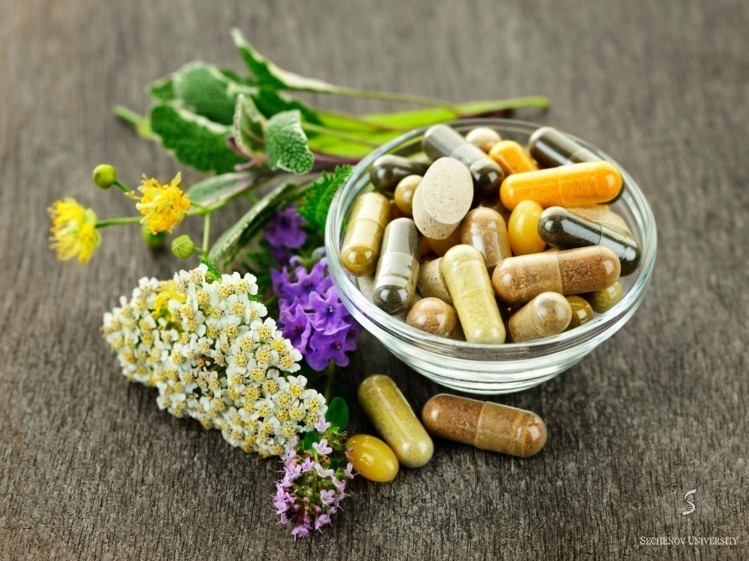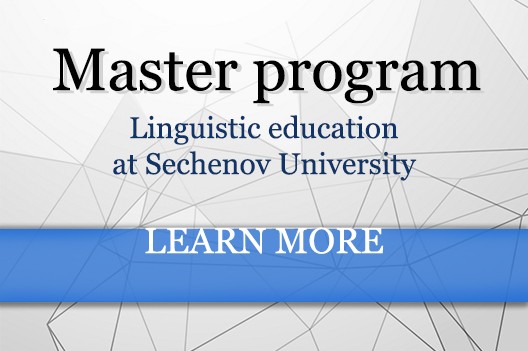-
About University
- Mission & Brand Strategy
- University Leadership
- Rector's Welcome
- History
- Regulatory Documents
- Contacts
- Staff
- International Recruitment
- Partners
Applicants- Why Sechenov University
- Degree Programmes in English
- Preparatory Training
- Non-Degree Programmes
- Transfer from other Institutions
- FAQs
08.06.2020Sechenov researchers developed new method to ID bioactive compounds
 A group of scientists from Sechenov University (Russia) and La Trobe University (Australia) have successfully applied a new method for examination of Mediterranean and Australian native culinary herbs. They used an Effect Directed Analysis (EDA) approach, which is a combination of chromatographic separation with in situ (bio)assays and physico-chemical characterisation to discover and identify bioactive compounds in complex plant samples.
A group of scientists from Sechenov University (Russia) and La Trobe University (Australia) have successfully applied a new method for examination of Mediterranean and Australian native culinary herbs. They used an Effect Directed Analysis (EDA) approach, which is a combination of chromatographic separation with in situ (bio)assays and physico-chemical characterisation to discover and identify bioactive compounds in complex plant samples.
In the paper "Hyphenated TLC as a Tool in the Effect-Directed Discovery of Bioactive Natural Products" in the journal "Applied Sciences" the benefits of their method are explained in detail. It explains TLC uses the fact that various compounds are transported by a solvent and absorbed by a sorbent at different speeds. A sorbent-coated plate with a studied mixture is immersed with one end in the solvent, and under the action of capillary forces, it begins to rise along the plate, taking the substances of the mixture with it. As they move upward, the compounds are absorbed by the sorbent and remain as horizontal bands that can be distinguished in visible, infrared or ultraviolet light.
Using this method, scientists examined the properties of bioactive compounds from culinary herbs such as: basil, lavender, rosemary, oregano, sage and thyme, lemon myrtle, native thyme, sea parsley, seablite and saltbush.
After preparing the extracts, the scientists began to study their composition and qualities. Rosemary and oregano extracts showed the greatest antioxidant activity, while sage, oregano and thyme were the best at slowing down reactions involving α-amylase (extracts from lavender flowers and leaves were the only ones not to show this effect). Among the studied Australian native herbs, lemon myrtle showed the strongest antioxidant properties, with the best α-amylase inhibition observed with extracts of native thyme (this property was noticed for the first time), sea parsley and saltbush.
Bioassays allow researchers to determine the properties of compounds, such as toxicity, observing how model organisms (bacteria, plants or small animals) react to them. In this way, one can select extracts able to inhibit the action of individual enzymes or reactive oxygen species.
As the researchers conclude, "this approach is more cost effective, enabling a more streamlined method to detect and characterise natural products that are suitable candidates for further investigation as potential new drug molecules."Embed on website
Sechenov researchers developed new method to ID bioactive compounds
A group of scientists from Sechenov University (Russia) and La Trobe University (Australia) have successfully applied a new method for examination of Mediterranean and Australian native culinary herbs. They used an Effect Directed Analysis (EDA) approach, which is a combination of chromatographic separation with in situ (bio)assays and physico-chemical characterisation to discover and identify bioactive compounds in complex plant samples.
In the paper "Hyphenated TLC as a Tool in the Effect-Directed Discovery of Bioactive Natural Products" in the journal "Applied Sciences" the benefits of their method are explained in detail. It explains TLC uses the fact that various compounds are transported by a solvent and absorbed by a sorbent at different speeds. A sorbent-coated plate with a studied mixture is immersed with one end in the solvent, and under the action of capillary forces, it begins to rise along the plate, taking the substances of the mixture with it. As they move upward, the compounds are absorbed by the sorbent and remain as horizontal bands that can be distinguished in visible, infrared or ultraviolet light.
Using this method, scientists examined the properties of bioactive compounds from culinary herbs such as: basil, lavender, rosemary, oregano, sage and thyme, lemon myrtle, native thyme, sea parsley, seablite and saltbush.
After preparing the extracts, the scientists began to study their composition and qualities. Rosemary and oregano extracts showed the greatest antioxidant activity, while sage, oregano and thyme were the best at slowing down reactions involving α-amylase (extracts from lavender flowers and leaves were the only ones not to show this effect). Among the studied Australian native herbs, lemon myrtle showed the strongest antioxidant properties, with the best α-amylase inhibition observed with extracts of native thyme (this property was noticed for the first time), sea parsley and saltbush.
Bioassays allow researchers to determine the properties of compounds, such as toxicity, observing how model organisms (bacteria, plants or small animals) react to them. In this way, one can select extracts able to inhibit the action of individual enzymes or reactive oxygen species.
As the researchers conclude, "this approach is more cost effective, enabling a more streamlined method to detect and characterise natural products that are suitable candidates for further investigation as potential new drug molecules."



